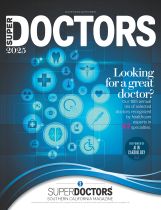July 3, 2013
Centers for Disease Control and Prevention (CDC)
A new study looking at the prevalence of human papillomavirus (HPV) infections in girls and women before and after the introduction of the HPV vaccine shows a significant reduction in vaccine-type HPV in U.S. teens. The study, published in [the June issue of] The Journal of Infectious Diseases reveals that since the vaccine was introduced in 2006, vaccine-type HPV prevalence decreased 56 percent among female teenagers 14-19 years of age.
About 79 million Americans, most in their late teens and early 20s, are infected with HPV. Each year, about 14 million people become newly infected.
"This report shows that HPV vaccine works well, and the report should be a wake-up call to our nation to protect the next generation by increasing HPV vaccination rates," said CDC Director Tom Frieden, M.D., M.P.H. "Unfortunately only one third of girls aged 13-17 have been fully vaccinated with HPV vaccine. Countries such as Rwanda have vaccinated more than 80 percent of their teen girls. Our low vaccination rates represent 50,000 preventable tragedies - 50,000 girls alive today will develop cervical cancer over their lifetime that would have been prevented if we reach 80 percent vaccination rates. For every year we delay in doing so, another 4,400 girls will develop cervical cancer in their lifetimes."
According to CDC, each year in the United States, about 19,000 cancers caused by HPV occur in women, and cervical cancer is the most common. About 8,000 cancers caused by HPV occur each year in men in the United States, and oropharyngeal (throat) cancers are the most common.
The study by Dr. Lauri Markowitz and colleagues at the CDC used the National Health and Nutrition Examination Survey (NHANES) data to compare prevalence-or proportion of girls and women aged 14-59 years with certain types of HPV-before the start of the HPV vaccination program (2003-2006) with the prevalence after vaccine introduction (2007-2010). As expected from clinical trials before the vaccine was licensed, the study also showed that the vaccine is highly effective.
"The decline in vaccine type prevalence is higher than expected and could be due to factors such as to herd immunity, high effectiveness with less than a complete three-dose series and/or changes in sexual behavior we could not measure," said Dr. Markowitz. "This decline is encouraging, given the substantial health and economic burden of HPV-associated disease."
Through these promising results, public health experts and clinicians look forward to more people getting vaccinated for HPV. Routine vaccination at age 11-12 for both boys and girls is recommended, but according to recent national immunization surveys, only about half of all girls in the U.S.-and far fewer boys-received the first dose of HPV vaccine. A series of three shots is recommended over six months. HPV vaccination is also recommended for older teens and young adults who were not vaccinated when younger.
The journal article will be available on The Journal of Infectious Diseases website (jid.oxfordjournals.org/content/early/recent) after the embargo lifts. For additional information on HPV, visit www.cdc.gov/hpv/.

